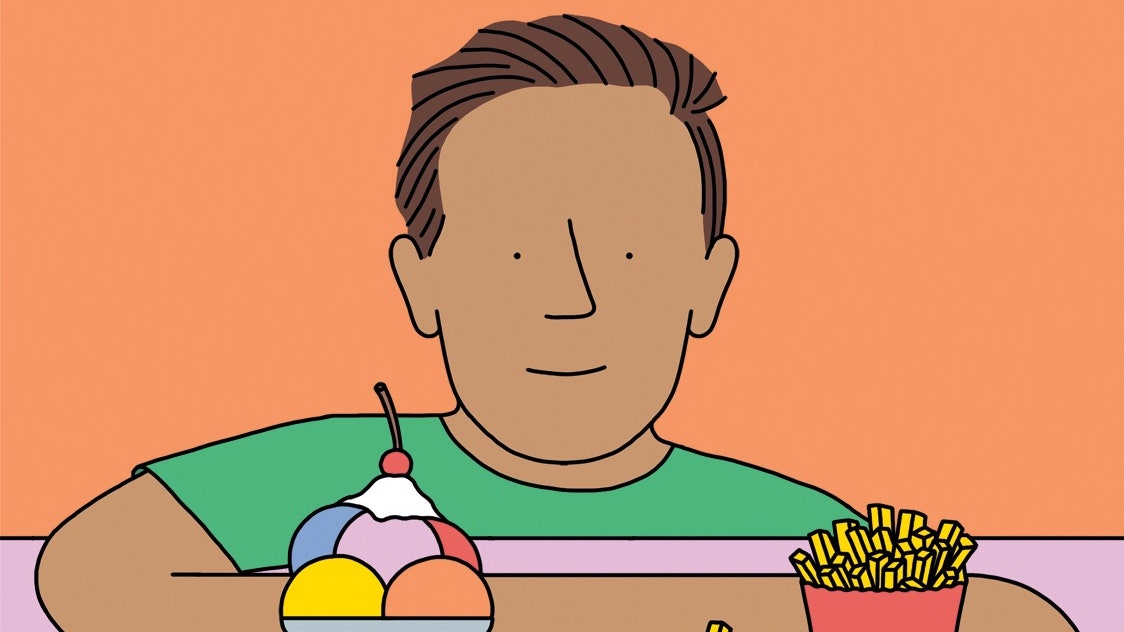- cross-posted to:
- hackernews@derp.foo
- cross-posted to:
- hackernews@derp.foo
Interesting read!
The key takeaway seems to be creating friction to make bad habits less convenient, and replacing bad habits with better habits, as knowledge of a bad habit isn’t enough to quench it.
Relevant except:
Where Wood emphasizes situational control as a way of making good habits easy, Duhigg writes about a woman who bites her nails and is advised to find something else to do with her hands that will produce a comparable physical stimulation, such as rapping her knuckles on a desk. The idea is to keep the powerful structure of cue and reward intact but to tweak the content of the routine. For both writers, though, the key lies not in breaking a habit through will power but in replacing one habit with another.
Both, too, emphasize the role of conscious effort—not in resisting habit but in analyzing it, the better to formulate a strategy for reform. Duhigg describes how, after having gained some weight, he gave up getting a cookie each afternoon in the Times cafeteria. Putting a no-cookie injunction on a Post-it note was a non-starter: he’d ignore it, wander to the cafeteria, chat with colleagues at the cash register, and buy and eat his cookie. So he set about identifying the trigger for his habit, adopting five categories proposed by researchers: time, place, emotional state, other people, and the action immediately preceding the habitual one. Was he hungry, or bored, or in need of a break or a blood-sugar boost? He switched up his routine, eating a doughnut at his desk instead of visiting the cafeteria, or taking a brief stroll outside. He was testing hypotheses: if eating the doughnut at his desk didn’t sate the urge to go to the cafeteria, he could rule out sugar. By a process of elimination, he determined that his habit was really driven by a need for interaction and distraction. The best replacement for a cookie turned out to be going over to a friend’s desk to chat.
Wood ends her book with advice for those of us who have become hostages to our smartphones. She offers a stepwise strategy. First, recognize your dependency, and acknowledge how the habit disrupts work, social interactions, and safe driving. Next, “control the context cues,” meaning identify what triggers you to grab the phone. For me, the cues are aural (the ping, the French horn) and visual (pop-ups on the screen). I already knew that putting the phone on silent wasn’t enough to break the habit, but, as in the marshmallow experiment, out of sight could be out of mind. In the mornings, preparing breakfast, I found that it helped to leave the phone in another room. In the car, it went in the glove compartment. When walking around, I’d put it in a zippered pocket. There were other ways of generating friction and making the habit harder to indulge. Turning the phone off completely was much more effective than silencing it, not because I wasn’t curious about who might have e-mailed me but because turning it back on was a hassle.
Wood advises us to come up with new rewards as substitutes for the ones the phone provided. I listened to music on the car radio. In the evening, instead of scrolling through tweets and e-mails, I sought out authors I’d never read. At the end of each day, I felt calmer, and free.
Alternately, here’s a cGPT summary:
The New Yorker article explores breaking bad habits, emphasizing that relying solely on willpower is often ineffective. The author, Jerome Groopman, shares his personal struggle with smartphone addiction and highlights the unconscious nature of habit formation. Drawing on social psychologist Wendy Wood’s work, the article suggests that breaking habits involves an interplay of decisions and unconscious factors.
Wood’s research indicates that habits constitute a significant portion of our actions, about 43% of the time. Traditional approaches, such as public health initiatives promoting awareness, often fail to change behavior because habits operate on a subconscious level. The article introduces the concept of “friction” as a central force in eliminating bad habits. By making bad habits more inconvenient, individuals can leverage inertia to move toward positive behaviors without relying on sheer willpower.
Wood’s thesis revolves around restructuring our environment to support good behaviors. The article discusses how situational control, achieved by modifying the environment, can be more effective than relying solely on willpower. Examples include laws restricting smoking in public spaces, taxes on cigarettes, and the removal of tobacco ads.
The article contrasts this with modern businesses that aim to reduce friction, making it easier for consumers to indulge in certain behaviors. Wood’s emphasis on situational control aligns with the idea that breaking bad habits involves making them less convenient. The article also touches on the role of cues and rewards in habit loops, citing examples from both Wood and Charles Duhigg.
Ultimately, the key takeaway is that breaking bad habits requires understanding the cues and rewards associated with them. Instead of relying on willpower alone, individuals can effectively replace undesirable habits by modifying their environment, creating new routines, and introducing friction to make the habit less convenient. The article concludes with practical advice on breaking smartphone addiction by recognizing dependency, controlling context cues, and finding new rewards as substitutes for smartphone use.



